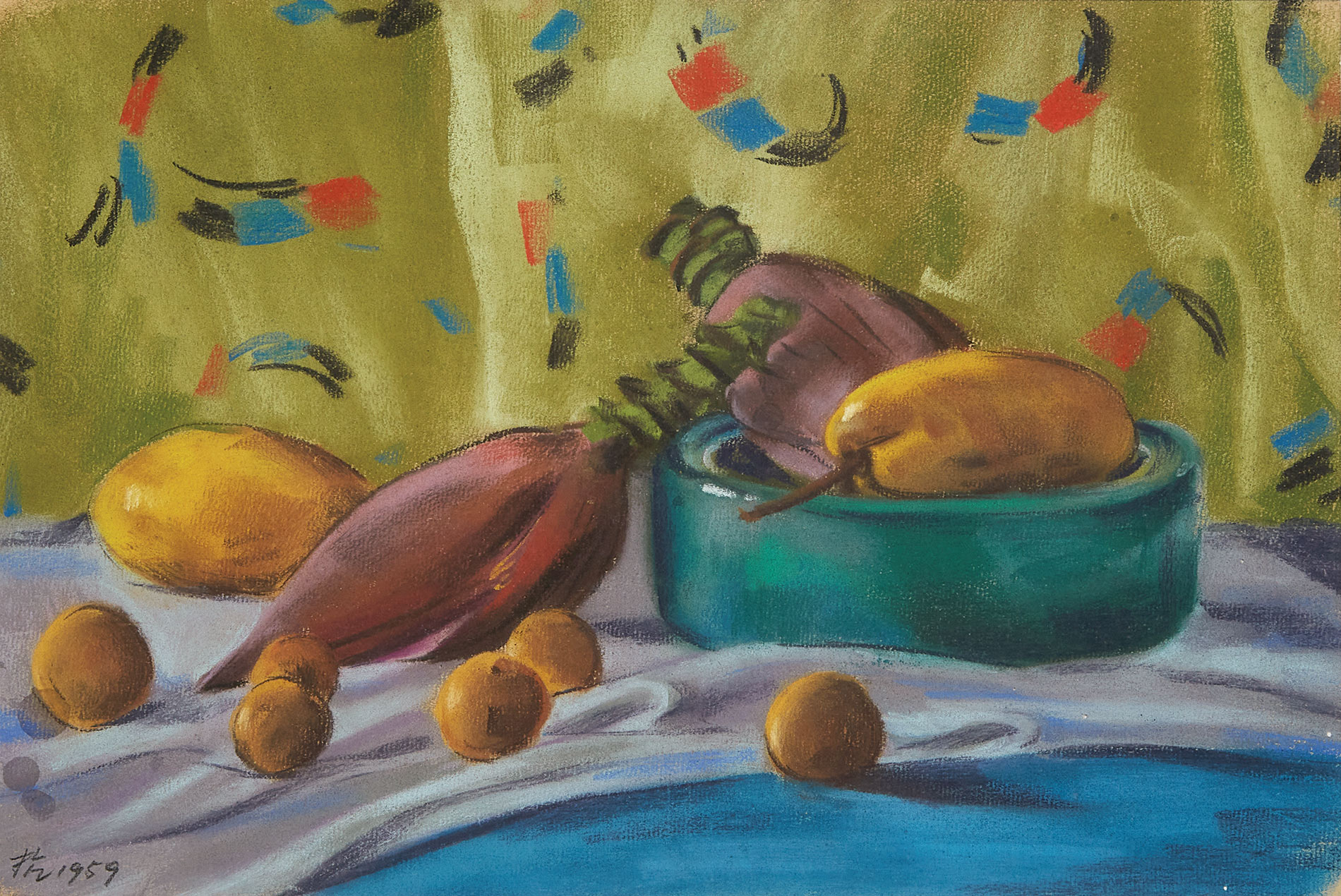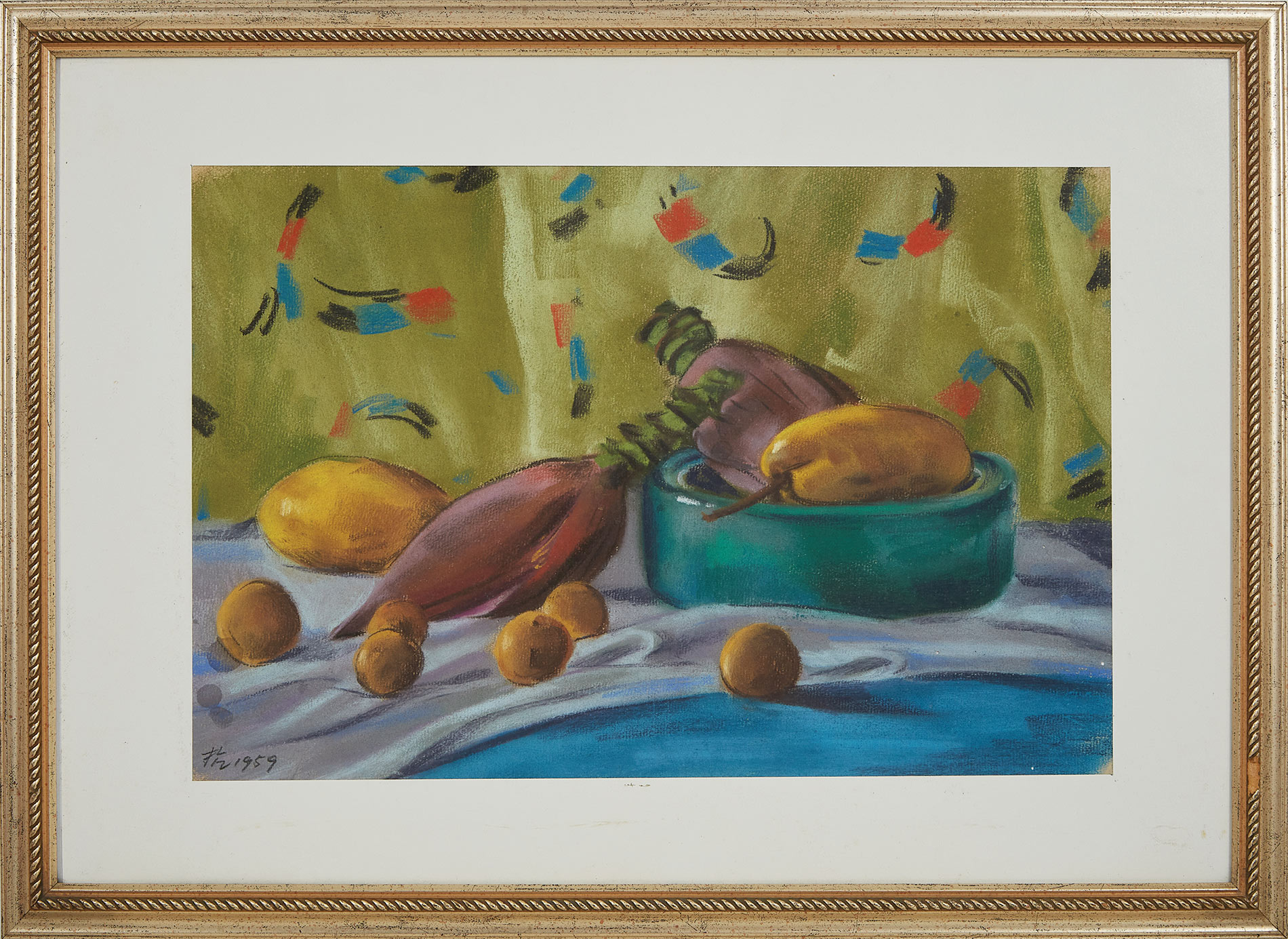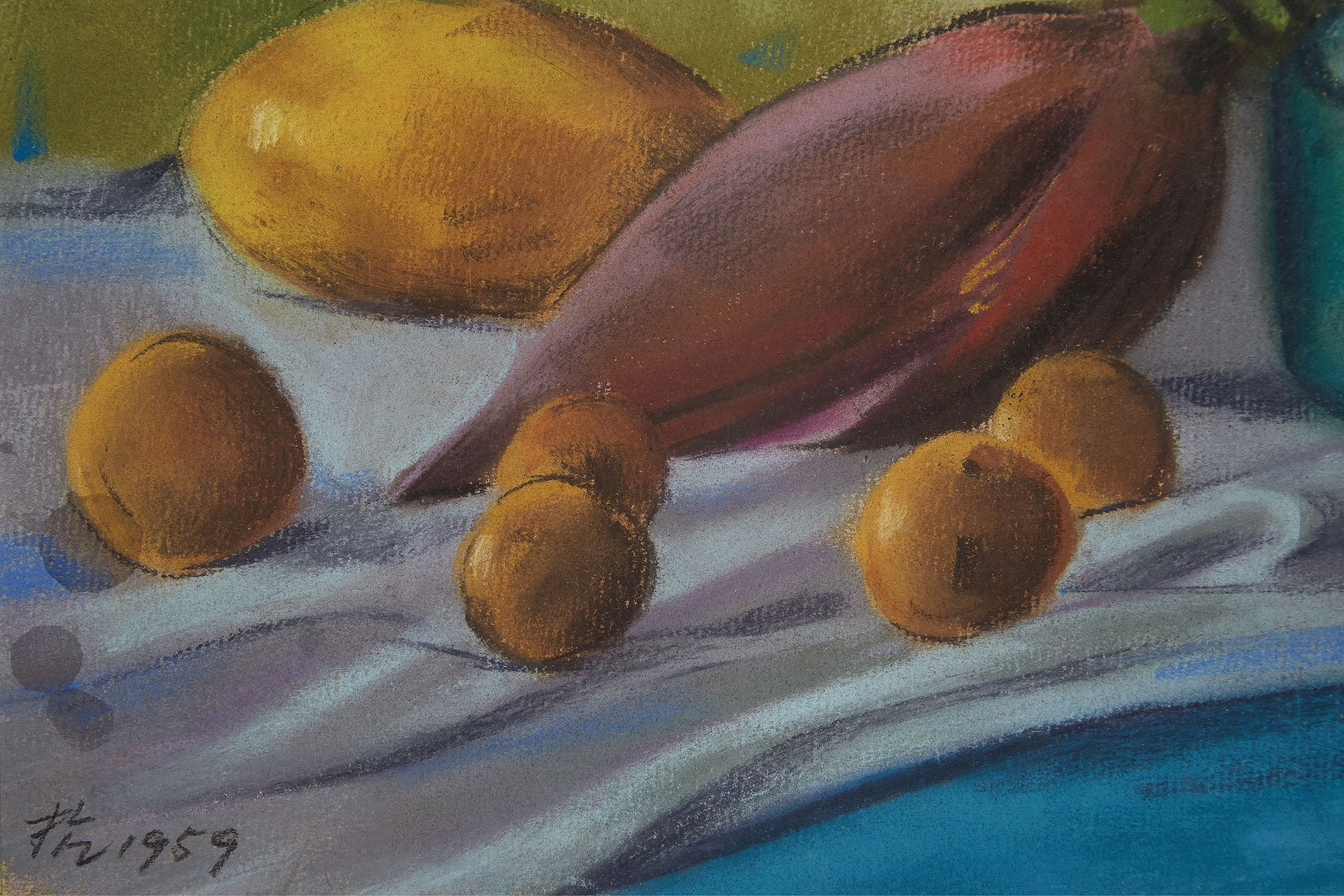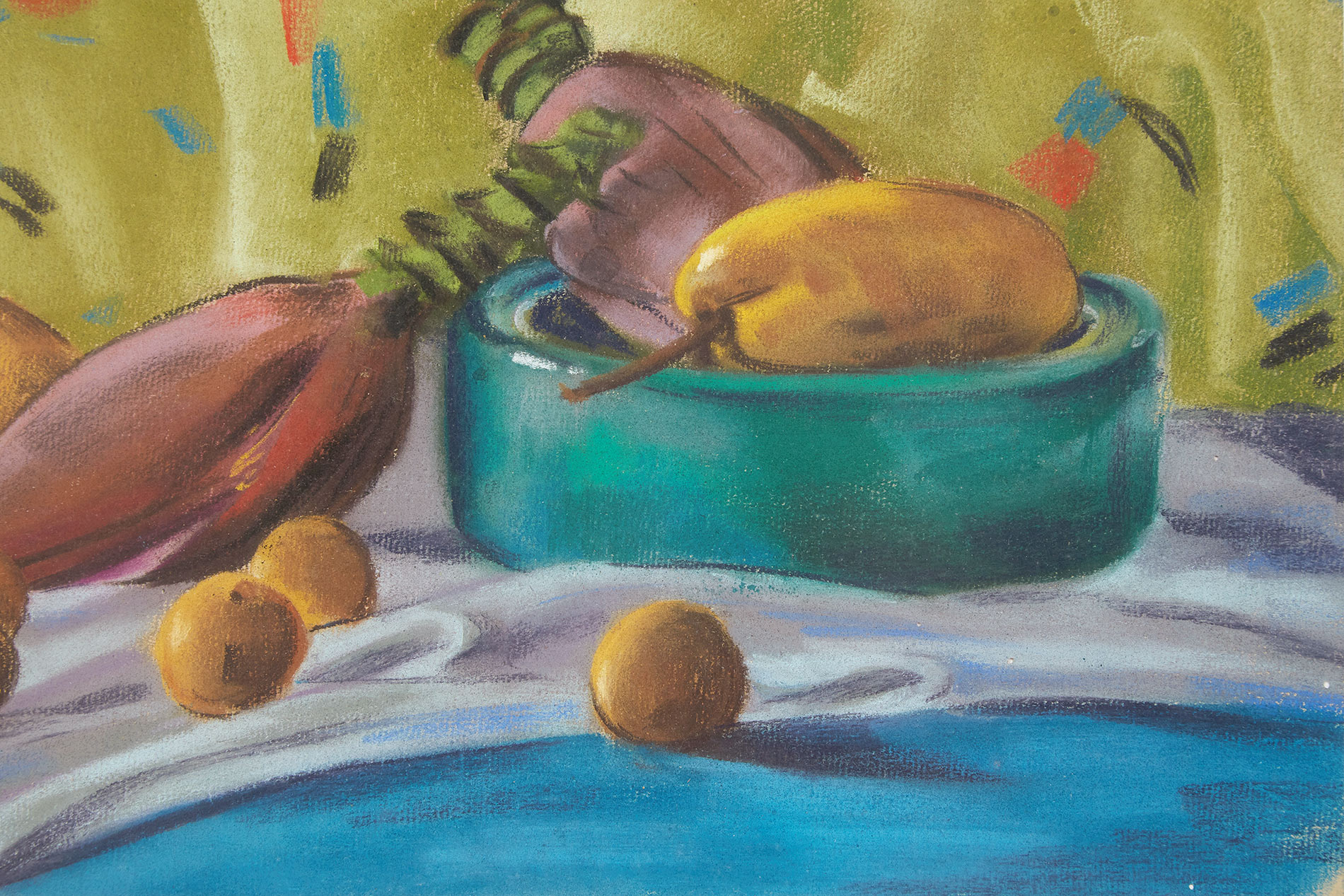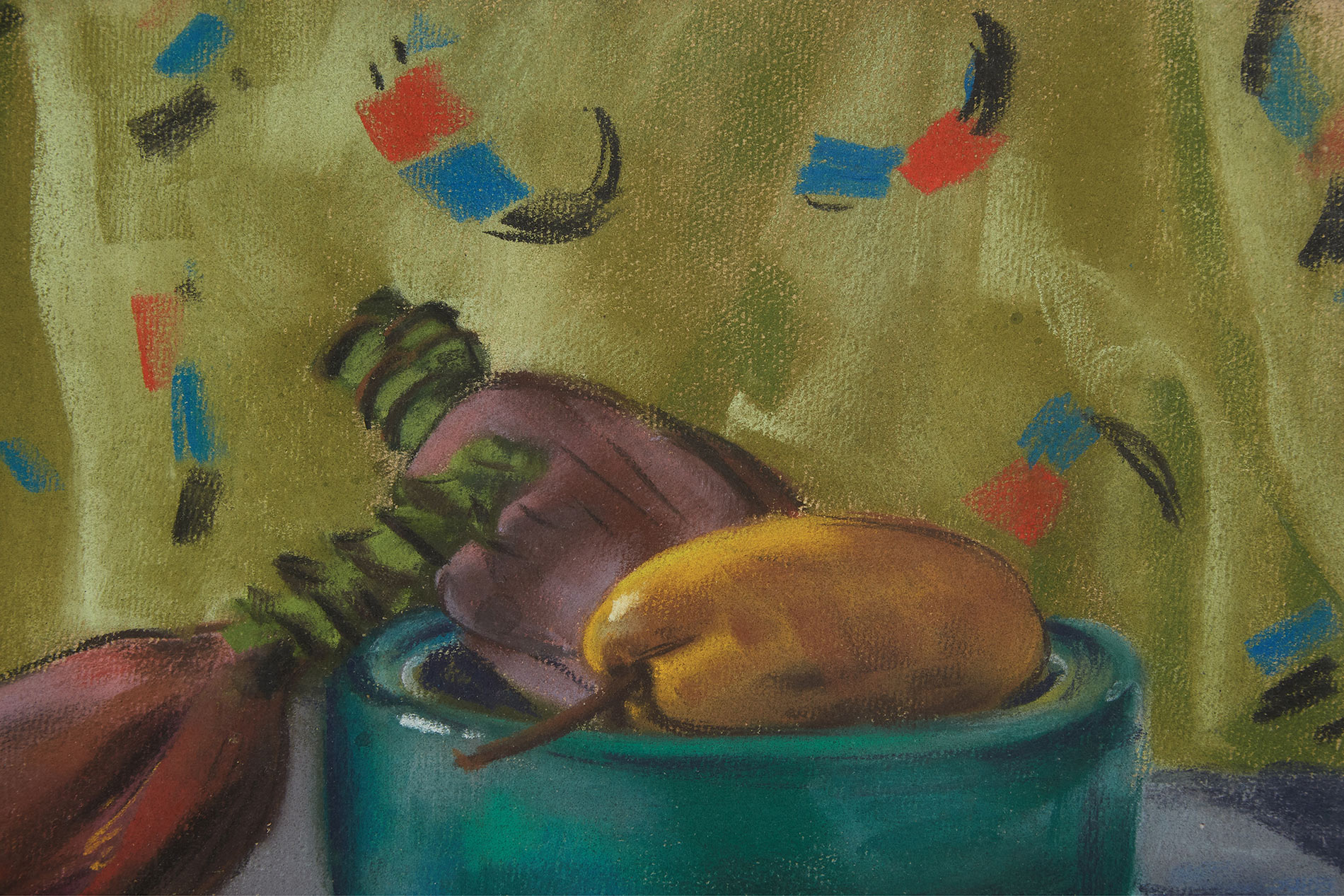LOT 914
Liu Kang
(1911 - 2004, Singaporean)
Still Life
executed in 1959
pastels on paper
30 x 48 cm
signed and dated on lower left
S$ 8,000 - 12,000
US$ 6,180 - 9,270
Pick up point: Singapore
LIU KANG
Liu Kang (b. China 1911 – d. Singapore 2004) was an influential pioneering Singapore first-generation artist, art educator and critic who, together with Cheong Soo Pieng, Chen Chong Swee and Chen Wen Hsi, birthed the Nanyang style. In 1952, the four of them went on their historic excursion to Bali where they stayed for a few months and were greatly inspired by the sights, sounds, rhythms and colours of Bali, resulting in the birth of the Nanyang style of art.
An instrumental figure in the development of the Singapore art scene, Liu Kang was recognised for his many contributions to art in Singapore. He received the Bintang Bakti Masyarakat (Public Service Star) in 1970 and the Pingat Jasa Gemilang (Meritorious Service Medal) in 1996 for his contributions to art in Singapore.
Born in 1911 in Yongchun, China, a six-year-old Liu Kang moved with his family to Muar, Malaya where his father purchased a rubber plantation. Liu attended Chung Hwa School and then Chinese High School in Singapore, and was sent to China to continue his secondary school education in Jinan University Middle School in Shanghai. During the school holidays, Liu attended a two-month long art course at the Shanghai Academy of Fine Arts. Liu was allowed to enrol in the academy, starting his formal art education in the second year of the art programme. At the academy, he learnt much under the mentorship of his principal Liu Haisu.
After graduating from the academy in 1928, he together with Chen Jen Hao, Liu travelled to Paris, France to further his art education at the Académie de la Grande Chaumière from 1929 to 1933. In this new artistically rich environment, he found great inspiration in the works of Gauguin, van Gogh, Matisse and Cézanne. Completing his course at the Académie de la Grande Chaumière, Liu returned to Shanghai and joined the Shanghai Academy of Fine Arts as its youngest professor, teaching Western Painting. In 1937, shortly after marrying Chen Jen Ping, Shanghai fell to the Japanese Invasion and the couple moved to Malaya.
In 1957, Liu held his first solo exhibition at the Victoria Theatre Hall. The works showed the artist in a new phase of maturity, which saw him seeking to represent the experience of the Chinese diaspora in Southeast Asia. In 1968, he became a founding member of the Singapore Art Society, and served as its president for 11 years until 1979.
In 2003, Liu Kang donated over 1,000 paintings and sketches, to the Singapore Art Museum. The following year, he passed away at the age of 93 in Singapore. In 2011, his artistic achievements were celebrated with a retrospective exhibition Liu Kang: A Centennial Celebration, organised by the National Art Gallery, Singapore and held at the Singapore Art Museum. The 100 works, sketches, essays and artefacts on display took audiences through the artistic journey of Liu Kang from a young migrant artist to national treasure.
Condition Report
The drawing and paper are in good condition. There are no signs of creasing, tearing, foxing or watermarks on the paper. The drawing is offered with frame. Not examined out of frame.
Please note that this report has been compiled by Larasati staff based solely on their observation on the work. Larasati specialists are not professional conservators; thus the report should be treated only as an expression of opinion and not as a statement of fact. We suggest that you consult your own restorer for a more thorough report. We remind you again that all work is sold 'as is' and should be viewed personally by you or your professional adviser before the sale to assess its condition.
IMPORTANT NOTICE :
Kindly note that the Auctioneer will conduct the auction LIVE in the Sale Room. However, if you are unable to attend the event, you are encouraged to register for phone bidding or putting absentee/written bid. You can also register to participate live on www.invaluable.com.
FOR THIS PARTICULAR SALE, LARASATI WILL NOT CHARGE AN ADDITIONAL ON-LINE COMMISSION. PREMIUM IS 22% ON FINAL HAMMER PRICE.
How To Bid
Live Bid
To partake in the Live "in-room" Bidding at Orchard Rendezvous Hotel, Antica V, Level 6, 1 Tanglin Road, Singapore 247905, on Saturday, 8 November 2025, please complete this form and submit to info@larasati.com. This form can also be completed in-person at the viewing and auction venue.
Absentee or Telephone Bid
To submit an Absentee Bid or Telephone Bid, please complete this form and submit to info@larasati.com.
Online Bidding
To bid via Live Online Bidding please register on:
INVALUABLE:
https://s.id/LRSTNOV2025
Bidding will be carried out in Singapore Dollars.
Any other currencies shown is just for reference only.


